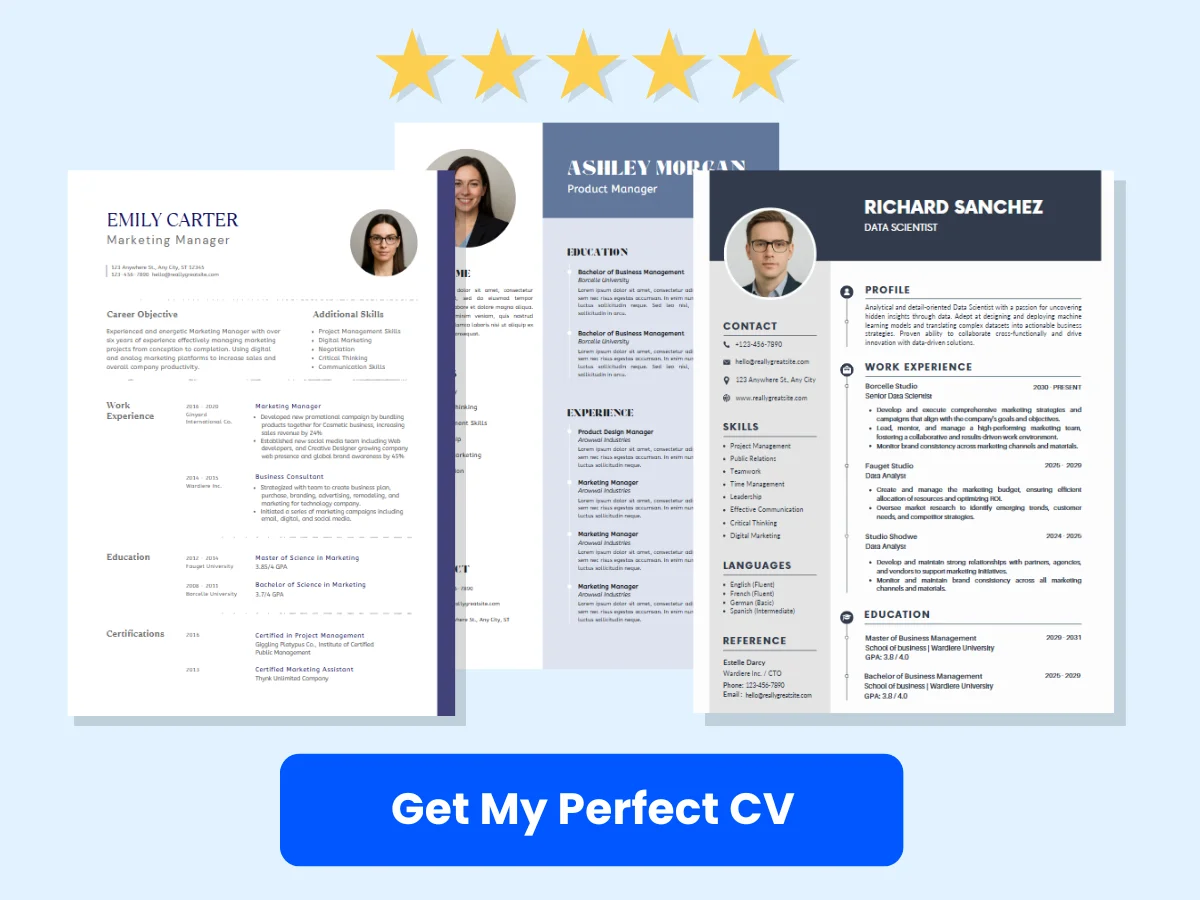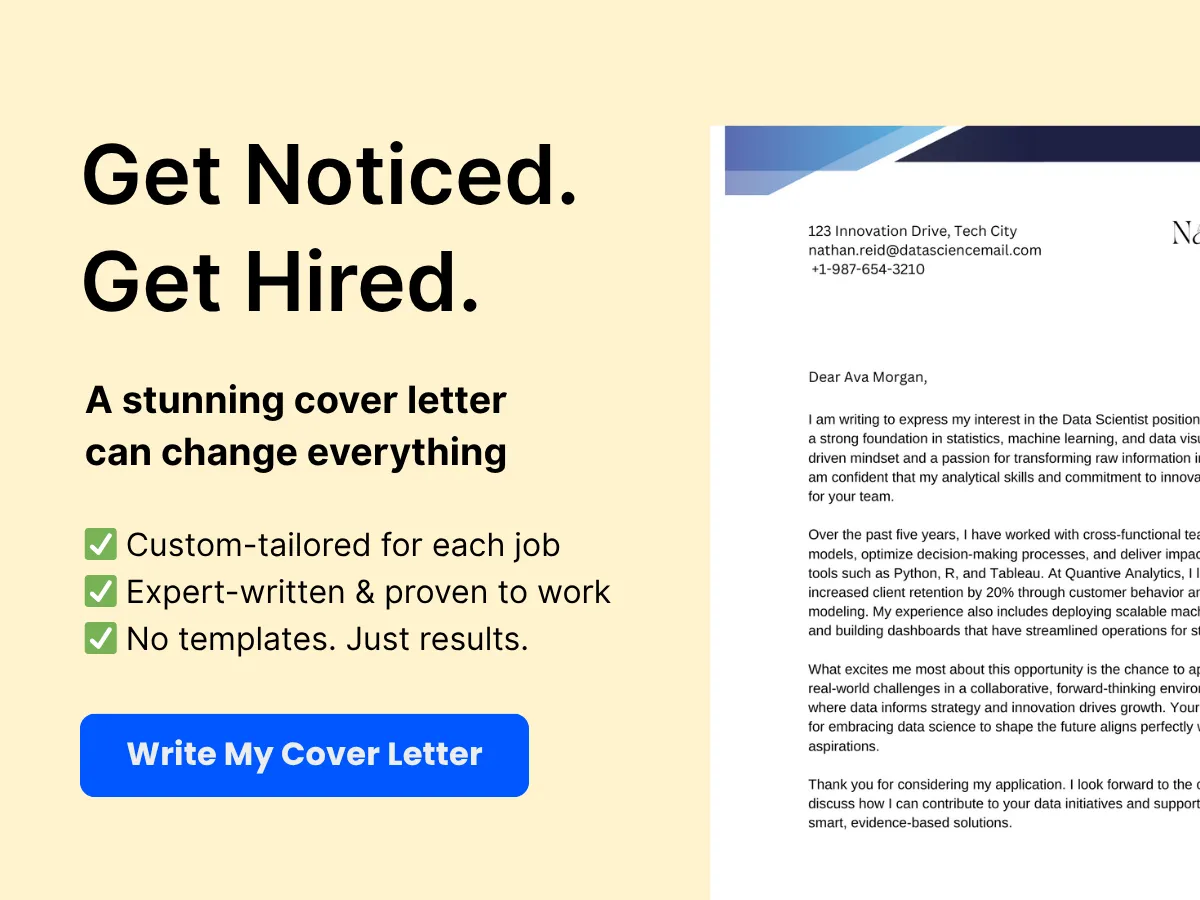In a world where first impressions can make or break opportunities, mastering the art of self-introduction is essential. Whether you’re networking at a professional event, meeting new colleagues, or simply engaging in social settings, how you present yourself can significantly influence the connections you forge. A simple yet effective self-introduction not only conveys who you are but also sets the stage for meaningful interactions.
This article delves into the nuances of crafting a self-introduction that resonates. We’ll explore the key elements that make an introduction memorable, the common pitfalls to avoid, and practical tips to tailor your approach for different contexts. By the end, you’ll be equipped with the tools to confidently introduce yourself in any situation, leaving a lasting impression that opens doors to new opportunities.
Exploring the Basics
Definition of Self-Introduction
A self-introduction is a brief presentation of oneself, typically encompassing key personal and professional details. It serves as a way to establish rapport, convey essential information, and set the tone for further interaction. The primary goal of a self-introduction is to provide listeners with a clear understanding of who you are, what you do, and what you bring to the table. This can include your name, background, interests, and relevant experiences, tailored to the context in which you are introducing yourself.
Self-introductions can vary in length and detail, depending on the audience and setting. In a professional context, a self-introduction might be more formal and focused on career achievements, while in a social setting, it may be more casual and personal. Regardless of the context, an effective self-introduction should be concise, engaging, and memorable.
Common Scenarios for Self-Introductions
Professional Settings
In professional environments, self-introductions are crucial for networking, establishing connections, and creating a positive first impression. Here are some common scenarios where self-introductions are essential:


- Job Interviews: During a job interview, candidates are often asked to introduce themselves. This is an opportunity to highlight relevant skills, experiences, and motivations. A well-crafted self-introduction can set the tone for the rest of the interview.
- Networking Events: At conferences or networking events, individuals often meet new contacts. A succinct self-introduction can help break the ice and facilitate conversations. It’s important to include your name, current role, and a brief mention of your professional interests.
- Team Meetings: When joining a new team or project, introducing yourself to colleagues fosters collaboration and teamwork. Sharing your role, expertise, and a personal touch can help build rapport.
For example, a self-introduction at a networking event might sound like this:
“Hi, I’m Jane Doe, a marketing specialist with over five years of experience in digital marketing. I currently work at XYZ Corp, where I focus on social media strategy and content creation. I’m passionate about leveraging data to drive engagement and would love to connect with others interested in innovative marketing solutions.”
Social Gatherings
Self-introductions in social settings are often more relaxed and informal. These scenarios can include parties, community events, or casual meetups. Here are some tips for effective self-introductions in social contexts:
- Be Approachable: Use a friendly tone and open body language. Smile and make eye contact to create a welcoming atmosphere.
- Share Personal Interests: In social settings, it’s beneficial to include personal interests or hobbies in your introduction. This can help find common ground with others.
- Keep it Light: Humor can be a great icebreaker. A light-hearted comment can make your introduction memorable.
For instance, at a community event, you might say:
“Hi everyone, I’m John Smith. I’m a local artist and a huge fan of outdoor activities. When I’m not painting, you can find me hiking the trails around here. I’m excited to meet fellow art enthusiasts and nature lovers!”
Online Platforms
In today’s digital age, self-introductions are also common in online platforms, such as social media, professional networking sites, and virtual meetings. Here are some scenarios where online self-introductions are relevant:


- Social Media Profiles: On platforms like LinkedIn, a well-crafted bio serves as your self-introduction. It should highlight your professional background, skills, and interests, making it easy for others to understand your expertise.
- Virtual Meetings: In online meetings, especially with participants who may not know each other, a brief self-introduction can help establish a connection. It’s important to be clear and concise, given the virtual format.
- Online Forums and Communities: When joining online forums or communities, introducing yourself in a post can help you engage with other members. Sharing your interests and what you hope to gain from the community can foster connections.
For example, in a virtual meeting, you might introduce yourself like this:
“Hello everyone, I’m Sarah Lee, a software developer specializing in web applications. I’ve been in the industry for about three years and am currently working on a project that focuses on user experience. I’m looking forward to collaborating with all of you!”
Crafting Your Self-Introduction
Regardless of the setting, crafting an effective self-introduction involves several key components:
- Clarity: Be clear about who you are and what you do. Avoid jargon or overly complex language that may confuse your audience.
- Relevance: Tailor your introduction to the context. Highlight aspects of your background that are most relevant to the audience you are addressing.
- Engagement: Aim to engage your audience. Ask a question or invite others to share their experiences to foster interaction.
- Practice: Rehearse your self-introduction to ensure it flows smoothly. Practicing can help reduce anxiety and improve your delivery.
Self-introductions are a vital communication skill that can enhance personal and professional interactions. By understanding the context and audience, you can craft a self-introduction that is simple yet effective, leaving a lasting impression.
Preparing for a Self-Introduction
Self-introductions are a vital part of personal and professional interactions. Whether you’re meeting someone for the first time at a networking event, introducing yourself in a job interview, or speaking at a conference, how you present yourself can significantly impact the impression you leave. To ensure your self-introduction is effective, it’s essential to prepare adequately. This preparation involves identifying your audience, setting clear objectives, and crafting a personal narrative that resonates. Below, we delve into these components in detail.


Identifying Your Audience
The first step in preparing for a self-introduction is understanding who your audience is. Your audience can vary widely depending on the context of the introduction. For instance, introducing yourself to a group of industry professionals at a conference will differ from introducing yourself to a potential employer during a job interview.
- Professional Context: If you are in a professional setting, consider the industry, the roles of the individuals present, and their potential interests. Tailoring your introduction to highlight relevant skills and experiences can create a stronger connection.
- Social Context: In a more casual setting, such as a networking event or a social gathering, your introduction might focus more on personal interests and hobbies, allowing for a more relaxed and engaging conversation.
- Cultural Considerations: Be mindful of cultural differences that may influence how introductions are perceived. In some cultures, formal titles and last names are important, while in others, first names are preferred.
By identifying your audience, you can tailor your message to resonate with them, making your introduction more impactful.
Setting Clear Objectives
Once you have a clear understanding of your audience, the next step is to set clear objectives for your self-introduction. What do you want to achieve with your introduction? Your objectives will guide the content and tone of your narrative.
- Establishing Credibility: If your goal is to establish credibility, focus on your professional background, achievements, and relevant experiences. For example, “I have over five years of experience in digital marketing, specializing in social media strategy, where I successfully increased engagement by 40% for my previous employer.”
- Building Rapport: If your aim is to build rapport, consider sharing personal anecdotes or interests that can create common ground. For instance, “In my free time, I enjoy hiking and photography, which allows me to explore new places and capture beautiful moments.”
- Encouraging Further Conversation: If you want to encourage further conversation, pose a question or invite feedback. For example, “I’m curious to hear about your experiences with digital marketing. What strategies have you found most effective?”
Having clear objectives will help you stay focused and ensure that your introduction serves its intended purpose.
Crafting a Personal Narrative
A well-crafted personal narrative is the heart of an effective self-introduction. This narrative should be concise, engaging, and tailored to your audience and objectives. Here are some key elements to include in your personal narrative:
Key Elements to Include
- Your Name: Start with your name. This may seem obvious, but it’s essential to ensure everyone knows who you are. For example, “Hello, my name is Jane Doe.”
- Your Background: Briefly share your professional background or relevant experiences. This could include your current role, previous positions, or educational background. For instance, “I am currently a project manager at XYZ Corp, where I lead a team of developers on software projects.”
- Your Skills and Achievements: Highlight specific skills or achievements that are relevant to the context. This helps establish your credibility. For example, “I have a strong background in agile project management, and I recently led a project that resulted in a 25% increase in efficiency.”
- Your Interests or Hobbies: Including a personal touch can make your introduction more relatable. Mentioning hobbies or interests can help break the ice. For example, “Outside of work, I enjoy painting and exploring local art galleries.”
- Your Goals or Aspirations: Share your professional goals or what you hope to achieve in the context of the introduction. This can help others understand your motivations. For instance, “I’m looking to expand my network in the tech industry and learn more about emerging trends.”
By incorporating these elements, you create a well-rounded introduction that provides a clear picture of who you are and what you bring to the table.
Avoiding Common Pitfalls
While crafting your self-introduction, it’s crucial to be aware of common pitfalls that can detract from your message. Here are some mistakes to avoid:


- Being Too Long-Winded: A self-introduction should be concise. Aim for a duration of about 30 seconds to 1 minute. Avoid overwhelming your audience with excessive details.
- Using Jargon or Technical Language: Unless you are certain your audience is familiar with specific terminology, avoid using jargon that may confuse them. Keep your language simple and accessible.
- Neglecting Body Language: Your body language plays a significant role in how your introduction is received. Maintain eye contact, smile, and use open gestures to convey confidence and approachability.
- Being Overly Modest or Arrogant: Striking the right balance between confidence and humility is essential. Avoid downplaying your achievements, but also steer clear of coming across as boastful.
- Failing to Practice: Practice your self-introduction to ensure smooth delivery. Rehearsing can help you refine your narrative and reduce anxiety during the actual introduction.
By avoiding these pitfalls, you can enhance the effectiveness of your self-introduction and leave a positive impression on your audience.
Preparing for a self-introduction involves understanding your audience, setting clear objectives, and crafting a personal narrative that highlights your background, skills, and aspirations. By following these guidelines, you can create a self-introduction that is not only simple and effective but also memorable.
Structuring Your Self-Introduction
The Opening
Greeting and Salutation
When crafting a self-introduction, the first impression is crucial. Start with a warm greeting that sets a positive tone. Depending on the context—whether it’s a formal meeting, a casual gathering, or an online introduction—your salutation may vary. For instance:
- Formal Setting: “Good morning, everyone. My name is [Your Name], and I’m delighted to be here today.”
- Casual Setting: “Hi there! I’m [Your Name]. It’s great to meet you all!”
Using a friendly tone can help break the ice and make you more approachable. Remember to smile and maintain eye contact if you’re in person, as this conveys confidence and openness.
Establishing Context
After your greeting, it’s essential to establish the context of your introduction. This helps your audience understand why you are speaking and what they can expect from you. You might say something like:
“I’m here today to share my experiences in [specific field or topic], and I hope to provide some insights that will be beneficial to all of you.” This not only sets the stage for your introduction but also engages your audience by hinting at the value you will provide.


The Body
Personal Background
In this section, you’ll want to share a bit about yourself that is relevant to the audience. This could include your hometown, education, or any personal anecdotes that shaped who you are today. For example:
“I grew up in [City/State], where I developed a passion for [hobby or interest]. After completing my degree in [Field of Study] at [University], I realized that my true calling was in [specific area].” This personal touch not only humanizes you but also helps the audience relate to your journey.
Professional Experience
Next, delve into your professional background. Highlight key roles, responsibilities, and achievements that are pertinent to the context of your introduction. Use bullet points for clarity and impact:
- Current Position: “I currently work as a [Job Title] at [Company], where I [describe your role and contributions].”
- Previous Experience: “Before this, I spent [number] years at [Previous Company], focusing on [specific tasks or projects].”
- Key Achievements: “One of my proudest achievements was [describe a significant accomplishment], which taught me [lesson learned].”
By outlining your professional experience, you establish credibility and demonstrate your qualifications to the audience. Tailor this section to align with the interests of your listeners, emphasizing aspects of your career that resonate with them.
Unique Selling Points
What sets you apart from others in your field? This is your opportunity to showcase your unique selling points (USPs). Consider what skills, experiences, or perspectives you bring to the table that others may not. For example:
“What makes me unique is my ability to [specific skill or trait], which I developed through [experience or training]. This has allowed me to [describe how this has benefited your work or projects].” You might also mention any certifications, languages spoken, or specialized knowledge that enhances your profile.


Incorporating your USPs not only reinforces your value but also makes your introduction memorable. It gives the audience a reason to remember you and consider you for future opportunities.
The Closing
Summarizing Key Points
As you approach the end of your self-introduction, it’s important to summarize the key points you’ve made. This reinforces your message and ensures that your audience retains the most important information. You might say:
“To recap, I’m [Your Name], a [Your Job Title] with a background in [Field/Industry]. I have experience in [mention key experiences], and I’m passionate about [specific interest or goal].” This brief summary helps to solidify your identity in the minds of your listeners.
Call to Action or Next Steps
Finally, conclude your self-introduction with a call to action or a suggestion for next steps. This could be an invitation for further discussion, a request for questions, or an offer to connect after the meeting. For example:
“I’d love to hear your thoughts on [related topic], so please feel free to reach out to me after this session. You can find me on [social media platform] or email me at [your email address].” This not only encourages engagement but also opens the door for networking opportunities.
A well-structured self-introduction consists of a warm greeting, context establishment, a detailed body covering personal and professional aspects, and a strong closing that invites further interaction. By following this structure, you can create a self-introduction that is not only simple and effective but also leaves a lasting impression on your audience.


Tailoring Your Self-Introduction
Crafting a self-introduction that resonates with your audience is an essential skill, whether you’re networking, attending a social event, or participating in a professional meeting. The key to a successful self-introduction lies in your ability to tailor your message to fit the context, audience, and medium. This section will explore how to adapt your self-introduction for various settings, the importance of cultural sensitivity, and how to adjust your approach for different mediums.
Adapting to Different Contexts
Understanding the context in which you are introducing yourself is crucial. Different situations call for different tones, levels of formality, and content. Here, we will delve into two primary dimensions of context: formal vs. informal settings and one-on-one vs. group introductions.
Formal vs. Informal Settings
In formal settings, such as business meetings, conferences, or professional networking events, your self-introduction should be polished and concise. Start with your name, followed by your current position and organization. You might also include a brief statement about your professional background or expertise relevant to the context. For example:
“Good morning, everyone. My name is Sarah Johnson, and I am the Marketing Manager at XYZ Corp. I have over five years of experience in digital marketing, focusing on social media strategy and content creation.”
In contrast, informal settings, such as social gatherings or casual meetups, allow for a more relaxed and personal approach. You can share more about your interests, hobbies, or even a fun fact about yourself. For instance:
“Hi there! I’m Sarah, and I love exploring new coffee shops around the city. When I’m not working as a Marketing Manager, you can usually find me with a good book or planning my next travel adventure!”
One-on-One vs. Group Introductions
The dynamics of your introduction can also change depending on whether you are speaking to an individual or a group. In a one-on-one introduction, you have the opportunity to engage in a dialogue. This means you can ask questions and tailor your conversation based on the other person’s responses. For example:
“Hi, I’m Sarah. I work in marketing at XYZ Corp. What about you? What do you do?”
In a group setting, your introduction should be more structured and succinct, as you are addressing multiple people at once. It’s important to maintain eye contact with the group and project your voice clearly. Here’s how you might introduce yourself in a group:
“Hello everyone, I’m Sarah Johnson, the Marketing Manager at XYZ Corp. I specialize in digital marketing and am excited to connect with all of you today!”
Cultural Sensitivity and Awareness
When introducing yourself, it’s essential to be culturally sensitive and aware of the diverse backgrounds of your audience. Different cultures have varying norms regarding introductions, including the level of formality, the importance of titles, and even the physical gestures involved.
For instance, in some cultures, it is customary to include titles and honorifics in introductions, while in others, a first-name basis is preferred. Additionally, the use of eye contact, handshakes, or bowing can vary significantly. To navigate these differences, consider the following tips:
- Research Cultural Norms: Before attending an event, familiarize yourself with the cultural backgrounds of the attendees. This can help you avoid unintentional faux pas.
- Observe and Adapt: Pay attention to how others introduce themselves and follow their lead. This can provide valuable cues on how to adjust your approach.
- Be Respectful: If you are unsure about the appropriate way to introduce yourself, it’s perfectly acceptable to ask. Most people appreciate the effort to be respectful and culturally aware.
Adjusting for Different Mediums
In today’s digital age, self-introductions can occur in various mediums, including in-person, written, and digital/virtual formats. Each medium requires a different approach to ensure your message is effectively communicated.
In-Person
In-person introductions are often the most straightforward. You have the advantage of body language, tone of voice, and immediate feedback from your audience. When introducing yourself in person, remember to:
- Smile and Make Eye Contact: A warm smile and direct eye contact can create a positive first impression.
- Use a Firm Handshake: If appropriate, a firm handshake can convey confidence and professionalism.
- Be Mindful of Your Body Language: Stand or sit up straight, and avoid crossing your arms, as this can appear closed off.
Written
Written self-introductions, such as emails or professional bios, require clarity and conciseness. Here are some tips for crafting an effective written introduction:
- Be Clear and Concise: Use straightforward language and avoid jargon. Aim for a length of 3-5 sentences.
- Highlight Key Information: Focus on your name, position, and relevant experience. You can also include a personal touch, such as a hobby or interest.
- Proofread: Always check for spelling and grammatical errors before sending your written introduction.
For example, a written self-introduction might look like this:
Subject: Introduction – Sarah Johnson
Dear Team,
My name is Sarah Johnson, and I am excited to join XYZ Corp as the new Marketing Manager. I have a background in digital marketing with a focus on social media strategy. In my free time, I enjoy hiking and exploring new coffee shops. I look forward to working with all of you!
Best,
Sarah
Digital/Virtual
With the rise of remote work and virtual meetings, knowing how to introduce yourself in a digital format is increasingly important. Here are some strategies for effective digital introductions:
- Be Engaging: Use a friendly tone and express enthusiasm. This helps to create a connection, even through a screen.
- Utilize Visuals: If you’re using video conferencing tools, ensure your background is professional and free of distractions.
- Practice Good Audio and Video Quality: Test your microphone and camera before the meeting to ensure clear communication.
In a virtual meeting, your introduction might sound like this:
“Hi everyone! I’m Sarah Johnson, the new Marketing Manager at XYZ Corp. I’m thrilled to be here and look forward to collaborating with all of you. A fun fact about me is that I love hiking on weekends!”
By tailoring your self-introduction to fit the context, being culturally sensitive, and adjusting for different mediums, you can create a memorable and impactful introduction that resonates with your audience. Remember, the goal is to connect and engage, so take the time to consider your approach in each unique situation.
Enhancing Your Delivery
Verbal Communication Skills
When it comes to self-introductions, the way you communicate verbally can significantly impact how your message is received. Mastering verbal communication skills involves focusing on tone, pace, clarity, and conciseness. Each of these elements plays a crucial role in ensuring that your introduction is not only heard but also understood and remembered.
Tone and Pace
Your tone of voice conveys emotions and attitudes, making it a powerful tool in communication. A warm, friendly tone can make you seem approachable, while a monotone voice may come across as disinterested. To enhance your self-introduction, consider the following:
- Match Your Tone to the Context: If you are introducing yourself in a formal setting, such as a business meeting, a professional tone is appropriate. Conversely, in a casual environment, a more relaxed tone can help you connect with your audience.
- Vary Your Tone: Emphasizing key points in your introduction with a change in tone can help maintain the listener’s interest. For example, when mentioning a significant achievement, raise your tone slightly to highlight its importance.
- Pace Yourself: Speaking too quickly can lead to misunderstandings, while speaking too slowly may cause your audience to lose interest. Aim for a moderate pace that allows your audience to absorb your message. Practice your introduction to find a comfortable rhythm.
Clarity and Conciseness
Clarity and conciseness are essential for effective communication. When introducing yourself, aim to convey your message in a straightforward manner. Here are some strategies to enhance clarity and conciseness:
- Use Simple Language: Avoid jargon or overly complex words that may confuse your audience. Instead, opt for clear and straightforward language that everyone can understand.
- Be Direct: Get to the point quickly. A self-introduction should be brief and focused, typically lasting no more than 30 seconds to a minute. Include only the most relevant information about yourself.
- Organize Your Thoughts: Structure your introduction logically. Start with your name, followed by your current role or position, and then share a few key details about your background or interests. This organization helps your audience follow along easily.
Non-Verbal Communication Skills
Non-verbal communication encompasses body language, eye contact, and gestures, all of which can significantly enhance your self-introduction. These elements can reinforce your verbal message and help establish a connection with your audience.
Body Language
Your body language can convey confidence and openness. Here are some tips to improve your body language during a self-introduction:
- Stand Tall: Good posture not only makes you appear more confident but also helps you project your voice better. Stand up straight with your shoulders back to convey assurance.
- Open Your Arms: Avoid crossing your arms, as this can signal defensiveness. Instead, keep your arms relaxed at your sides or use them to emphasize points during your introduction.
- Move Naturally: Use purposeful movements to engage your audience. Avoid fidgeting or excessive movements that can distract from your message.
Eye Contact
Establishing eye contact is crucial for building rapport with your audience. Here’s how to effectively use eye contact during your self-introduction:
- Engage with Your Audience: Make eye contact with different members of your audience as you speak. This creates a sense of connection and shows that you are engaged with them.
- Avoid Staring: While eye contact is important, staring can make people uncomfortable. Aim for a balance by maintaining eye contact for a few seconds before shifting your gaze.
- Practice in Front of a Mirror: Practicing your introduction in front of a mirror can help you become more aware of your eye contact and body language, allowing you to make adjustments as needed.
Gestures
Gestures can enhance your message and make your introduction more engaging. Here are some tips for using gestures effectively:
- Use Natural Gestures: Allow your hands to move naturally as you speak. This can help emphasize your points and make your introduction feel more dynamic.
- Avoid Overdoing It: While gestures can be helpful, excessive or exaggerated movements can be distracting. Keep your gestures purposeful and relevant to what you are saying.
- Practice with Gestures: Incorporate gestures into your practice sessions. This will help you become more comfortable using them during your actual introduction.
Overcoming Nervousness
Nervousness is a common experience when introducing yourself, especially in unfamiliar settings. However, with the right preparation techniques and mindfulness strategies, you can manage your anxiety and deliver a confident introduction.
Preparation Techniques
Preparation is key to overcoming nervousness. Here are some effective techniques to help you prepare for your self-introduction:
- Practice, Practice, Practice: Rehearse your introduction multiple times. This will help you become more familiar with your content and reduce anxiety. Consider practicing in front of friends or family for feedback.
- Know Your Audience: Research the people you will be introducing yourself to, if possible. Understanding your audience can help you tailor your introduction to their interests and expectations.
- Visualize Success: Spend a few moments visualizing yourself delivering a successful introduction. This positive imagery can help boost your confidence and reduce anxiety.
Mindfulness and Relaxation Strategies
Incorporating mindfulness and relaxation techniques into your routine can help you manage nervousness effectively. Here are some strategies to consider:
- Deep Breathing: Before your introduction, take a few deep breaths to calm your nerves. Inhale deeply through your nose, hold for a few seconds, and exhale slowly through your mouth. This can help reduce anxiety and center your thoughts.
- Grounding Techniques: Focus on your surroundings to help ground yourself. Notice the sensations in your body, the sounds around you, or the feeling of your feet on the ground. This can help bring your attention back to the present moment.
- Positive Affirmations: Use positive affirmations to boost your confidence. Repeat phrases like “I am prepared” or “I can do this” to reinforce a positive mindset before your introduction.
Examples of Effective Self-Introductions
Crafting a self-introduction can be a tough task, especially when you want to make a lasting impression. The context in which you introduce yourself can significantly influence how you present your information. Below, we explore various scenarios where effective self-introductions are essential, providing examples and insights to help you navigate each situation with confidence.
Professional Networking Event
Networking events are designed to foster connections, and your self-introduction is your first opportunity to make an impression. A well-structured introduction can open doors to new opportunities, collaborations, and friendships.
Example:
“Hello, my name is Sarah Johnson, and I’m a marketing manager at XYZ Corp, where I specialize in digital marketing strategies. I’ve been in the industry for over five years, focusing on social media campaigns that drive engagement and increase brand awareness. I’m here today to connect with fellow marketing professionals and share insights on the latest trends in our field. I’d love to hear about your experiences with influencer marketing!”
In this example, Sarah introduces herself by stating her name, job title, and company, followed by a brief overview of her expertise. She also expresses her intention for attending the event and invites conversation, which encourages engagement.
Job Interview
In a job interview, your self-introduction sets the tone for the entire conversation. It’s your chance to highlight your qualifications and demonstrate your fit for the role.
Example:
“Good morning, I’m Michael Thompson. I graduated with a degree in Computer Science from ABC University and have spent the last three years working as a software developer at Tech Innovations. In my role, I’ve led several projects that improved our application’s performance by 30%. I’m particularly passionate about developing user-friendly applications and am excited about the opportunity to contribute to your team at DEF Solutions, especially with your focus on innovative tech solutions.”
Michael’s introduction is concise yet informative. He mentions his educational background, relevant work experience, and specific achievements, which demonstrate his capabilities. Additionally, he aligns his interests with the company’s goals, showing that he has done his homework and is genuinely interested in the position.
Social Gathering
Social gatherings can be more relaxed than professional settings, but a good self-introduction is still important. It helps break the ice and can lead to meaningful conversations.
Example:
“Hi, I’m Emily Carter. I’m a graphic designer who loves creating visual stories. I recently moved to this city and am looking to meet new people and explore local art scenes. When I’m not designing, you can find me hiking or trying out new coffee shops. What about you?”
Emily’s introduction is friendly and approachable. She shares personal interests, which can help others relate to her and spark conversations. By asking a question at the end, she invites others to engage, making the interaction more dynamic.
Online Profile (e.g., LinkedIn)
Your online profile is often the first impression potential employers or connections will have of you. A strong self-introduction in this context should be professional yet personable, showcasing your skills and personality.
Example:
“Hello! I’m David Lee, a passionate data analyst with over four years of experience in transforming data into actionable insights. I have a strong background in statistical analysis and data visualization, and I thrive on solving complex problems. Currently, I’m working at Global Analytics, where I’ve helped streamline reporting processes, saving the company significant time and resources. I’m eager to connect with other professionals in the data field to share knowledge and explore new opportunities.”
David’s online introduction effectively summarizes his professional background, skills, and current role. He also expresses a desire to connect with others, which is crucial for networking on platforms like LinkedIn. Including specific achievements adds credibility and showcases his value to potential connections.
Key Elements of an Effective Self-Introduction
Regardless of the context, there are several key elements that can enhance your self-introduction:
- Clarity: Be clear and concise. Avoid jargon unless you are sure your audience understands it.
- Relevance: Tailor your introduction to the audience and context. Highlight aspects of your background that are most relevant to the situation.
- Engagement: Encourage interaction by asking questions or inviting others to share their experiences.
- Confidence: Deliver your introduction with confidence. Maintain eye contact and use a friendly tone to convey approachability.
- Practice: Rehearse your introduction to ensure it flows naturally. This will help reduce anxiety and improve your delivery.
Common Mistakes to Avoid
When crafting a self-introduction, it’s easy to fall into certain traps that can undermine your effectiveness. Understanding these common mistakes can help you refine your approach and ensure that your self-introduction resonates with your audience. Below, we explore four key pitfalls to avoid: overloading with information, being too vague or generic, failing to engage the audience, and ignoring feedback and adaptation.
Overloading with Information
One of the most frequent mistakes people make when introducing themselves is providing too much information. While it’s important to share relevant details about your background, skills, and interests, overwhelming your audience with excessive data can lead to confusion and disengagement.
Example: Imagine you’re at a networking event, and someone introduces themselves by saying, “Hi, I’m John. I graduated from Harvard with a degree in Computer Science, then worked at Google for five years, followed by a stint at a startup where I managed a team of 20 developers. I’m also a certified project manager and have published several papers on artificial intelligence.”
While John’s introduction contains impressive credentials, it’s too dense and lacks focus. Instead, he could streamline his introduction by highlighting one or two key achievements that align with the context of the conversation. For instance, “Hi, I’m John. I’m passionate about artificial intelligence and have spent the last five years at Google, where I led a team on innovative AI projects.” This version is concise, relevant, and leaves room for further discussion.
To avoid overloading your audience, consider the following tips:
- Know Your Audience: Tailor your introduction to the interests and expectations of your audience. What do they want to know about you?
- Be Selective: Choose the most relevant information that supports your purpose for introducing yourself. Less is often more.
- Practice Brevity: Aim for a self-introduction that lasts no longer than 30-60 seconds. This keeps your audience engaged and allows for follow-up questions.
Being Too Vague or Generic
Another common mistake is being too vague or generic in your self-introduction. When you use broad statements or clichés, you risk blending into the background and failing to make a memorable impression.
Example: Consider an introduction like, “Hi, I’m Sarah. I’m just a regular person who likes to work hard and have fun.” While this statement is friendly, it lacks specificity and doesn’t provide any insight into who Sarah is or what she does. As a result, it’s unlikely to spark interest or conversation.
To create a more impactful introduction, focus on unique aspects of your personality, experiences, or professional background. For instance, “Hi, I’m Sarah. I’m a graphic designer specializing in eco-friendly branding. I love helping businesses tell their stories through sustainable design.” This introduction is specific, showcases her expertise, and invites further discussion about her work.
To avoid vagueness, consider these strategies:
- Highlight Unique Qualities: Think about what sets you apart from others in your field. What are your passions, skills, or experiences that make you unique?
- Use Specific Examples: Instead of making broad statements, provide concrete examples that illustrate your points. This adds depth and interest to your introduction.
- Be Authentic: Authenticity resonates with people. Share your genuine interests and experiences to create a connection with your audience.
Failing to Engage the Audience
Engagement is key to a successful self-introduction. If you fail to connect with your audience, your introduction may fall flat. Engaging your audience involves not only what you say but also how you say it.
Example: Imagine someone introducing themselves in a monotone voice, with little eye contact or enthusiasm. “Hi, I’m Mark. I work in finance.” This introduction is unlikely to capture anyone’s attention. In contrast, an engaging introduction might sound like, “Hi, I’m Mark! I’m passionate about helping people achieve their financial goals, and I love finding creative solutions to complex problems.” This version is more dynamic and invites interaction.
To enhance audience engagement, consider the following techniques:
- Use Body Language: Maintain eye contact, smile, and use open gestures to convey confidence and approachability.
- Incorporate Questions: Invite your audience to participate by asking a question related to your introduction. For example, “I’m a travel blogger—what’s your favorite travel destination?”
- Show Enthusiasm: Your energy can be contagious. Express genuine excitement about your work or interests to draw people in.
Ignoring Feedback and Adaptation
Finally, one of the most detrimental mistakes is ignoring feedback and failing to adapt your self-introduction based on the context or audience. Each situation is unique, and what works in one setting may not be effective in another.
Example: If you consistently introduce yourself in a formal manner at casual networking events, you may miss opportunities to connect with others. Conversely, if you use overly casual language in a professional setting, you might come across as unprofessional.
To ensure your self-introduction is effective, be open to feedback and willing to adapt. Here are some strategies to consider:
- Seek Constructive Criticism: After introducing yourself, ask trusted friends or colleagues for feedback. What did they find engaging? What could be improved?
- Observe Others: Pay attention to how others introduce themselves in various settings. What techniques do they use that resonate with the audience?
- Be Flexible: Tailor your introduction based on the context. For example, a more formal introduction may be appropriate in a job interview, while a casual approach may work better at a social gathering.
By avoiding these common mistakes—overloading with information, being too vague or generic, failing to engage the audience, and ignoring feedback—you can craft a self-introduction that is not only simple and effective but also memorable and impactful. Remember, the goal is to create a connection and leave a lasting impression, so take the time to refine your approach and practice your delivery.
Practice and Improvement
Mastering the art of self-introduction is not just about crafting the perfect words; it’s also about practice and continuous improvement. Just like any other skill, the ability to introduce yourself effectively can be honed through various methods. We will explore three key strategies: role-playing scenarios, seeking constructive feedback, and continuous refinement and adaptation.
Role-Playing Scenarios
Role-playing is a powerful technique that allows individuals to simulate real-life situations in a controlled environment. This method can be particularly beneficial for practicing self-introductions, as it helps to build confidence and improve delivery. Here’s how to effectively implement role-playing scenarios:
- Find a Partner: Team up with a friend, colleague, or family member who can act as your audience. This person can provide a safe space for you to practice your introduction without the pressure of a real-life situation.
- Set the Scene: Create realistic scenarios where you might need to introduce yourself. This could be at a networking event, a job interview, or even a casual social gathering. The more authentic the setting, the better you can prepare.
- Take Turns: Allow both you and your partner to take turns introducing yourselves. This not only gives you the chance to practice but also helps you understand how others present themselves, which can provide valuable insights.
- Record and Review: If possible, record your role-playing sessions. Watching yourself can reveal body language cues, vocal tone, and pacing that you might not notice in the moment. This self-review is crucial for identifying areas for improvement.
For example, if you’re preparing for a job interview, you might role-play with a friend who acts as the interviewer. You can practice your self-introduction, focusing on your professional background, skills, and what makes you a good fit for the position. This practice can help you refine your message and delivery, making you feel more prepared when the actual interview occurs.
Seeking Constructive Feedback
Feedback is an essential component of improvement. After practicing your self-introduction, it’s important to seek constructive feedback from those who observed your performance. Here are some effective ways to gather and utilize feedback:
- Ask Specific Questions: When seeking feedback, be specific about what you want to improve. Instead of asking, “How did I do?” try asking, “Did my introduction sound engaging?” or “Was my body language confident?” This will help your feedback provider focus on the aspects you want to enhance.
- Choose the Right Audience: Select individuals who are familiar with effective communication techniques or who have experience in the context you are preparing for. Their insights will be more valuable than those from someone who may not understand the nuances of a good self-introduction.
- Be Open to Criticism: It’s important to approach feedback with an open mind. Constructive criticism can be uncomfortable, but it is essential for growth. Listen carefully to the feedback and consider how you can implement it in your next practice session.
- Follow Up: After making adjustments based on feedback, consider revisiting the same individuals for a second round of practice. This will not only show that you value their input but also allow you to gauge your improvement.
For instance, after practicing your self-introduction at a networking event, you might ask a colleague for feedback on your delivery and content. They might suggest that you include a personal anecdote to make your introduction more relatable, which can enhance your overall impact.
Continuous Refinement and Adaptation
The process of improving your self-introduction is ongoing. As you gain more experience and encounter different situations, it’s crucial to continuously refine and adapt your introduction to suit various contexts. Here are some strategies to ensure your self-introduction remains relevant and effective:
- Stay Current: Keep your introduction updated with your latest achievements, skills, and experiences. If you’ve recently completed a project or acquired a new skill, make sure to incorporate that into your introduction. This not only keeps your introduction fresh but also reflects your growth.
- Tailor to Your Audience: Different situations call for different introductions. For example, a self-introduction at a formal business meeting will differ from one at a casual social gathering. Always consider your audience and tailor your message accordingly. This shows respect for the context and enhances your connection with the listeners.
- Practice Regularly: Just like any other skill, regular practice is key to mastery. Set aside time each week to practice your self-introduction, whether it’s in front of a mirror, with a friend, or even in a professional setting. The more you practice, the more natural it will become.
- Reflect on Experiences: After each introduction, take a moment to reflect on what went well and what could be improved. This reflection will help you identify patterns in your performance and areas that need more focus.
For example, if you find that you often get nervous when introducing yourself in large groups, you might decide to practice in front of smaller groups first. Gradually increasing the size of your audience can help build your confidence and improve your delivery.
The journey to mastering self-introductions involves a commitment to practice and improvement. By engaging in role-playing scenarios, seeking constructive feedback, and continuously refining your approach, you can develop a self-introduction that is not only simple and effective but also uniquely yours. Remember, the goal is to create a lasting impression that resonates with your audience, and with dedication and practice, you can achieve just that.
Key Takeaways
- Understand the Importance: Self-introductions are crucial for making a positive first impression in various settings, from professional to social.
- Know Your Audience: Tailor your introduction based on who you are speaking to, considering their expectations and the context of the interaction.
- Craft a Personal Narrative: Include key elements such as your background, professional experience, and unique selling points to create a compelling story.
- Structure Effectively: Use a clear format: start with a greeting, provide your background, and conclude with a summary and call to action.
- Adapt to Context: Adjust your introduction for formal vs. informal settings and be mindful of cultural sensitivities.
- Enhance Delivery: Focus on verbal and non-verbal communication skills, including tone, body language, and eye contact, to engage your audience.
- Avoid Common Mistakes: Steer clear of overloading information, being vague, or failing to engage your audience.
- Practice Regularly: Use role-playing and seek feedback to continuously refine your self-introduction skills.
Conclusion
Mastering the art of self-introduction is essential for effective communication in both personal and professional environments. By understanding your audience, crafting a structured narrative, and enhancing your delivery, you can make a lasting impression. Remember to practice regularly and adapt your approach based on feedback and context. With these strategies, you can confidently introduce yourself and open doors to new opportunities.








